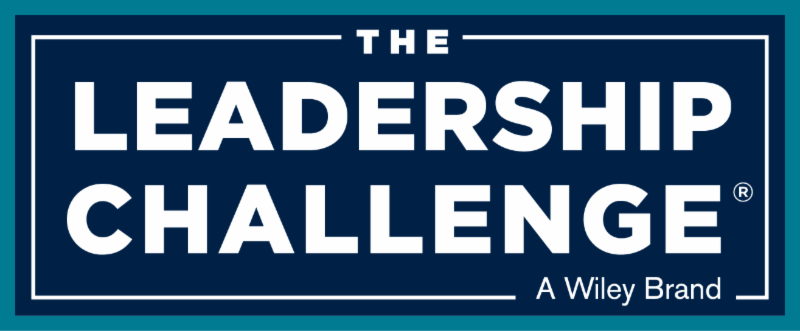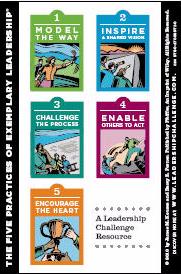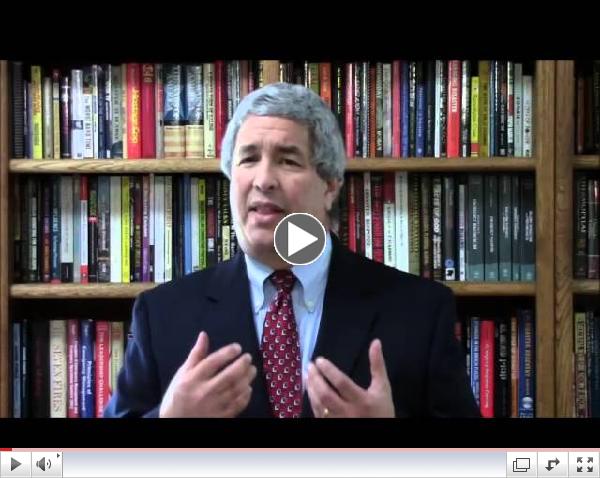|
|
| Buffalo Creek Dam Disaster |
Although largely forgotten today, the Buffalo Creek Dam failure on February 26, 1972 resulted in significant improvements in dam safety. The dam was a coal slurry impoundment dam holding some 132,000,000 gallons of black waste water. Poorly designed and engineered, the dam suffered a catastrophic failure after heavy rains, sending a wall of water 30 feet high through 16 coal towns in the Buffalo Creek Valley. One hundred and twenty-five people were killed and over a thousand injured. More than 5,000 people were left homeless in the flood's wake. The disaster forced inspections by the Army Corps of Engineers of similar dams across the country and the creation of new safety regulations. |
The following are excerpts from my blog
Canton on Emergency Management. Please visit my blog to see the rest of my articles.
Social media has shown itself to be a powerful tool for community organizing after a disaster. We saw an example of it in the London riots of 2011 when hundreds of people turn out to clean up the damage. We saw other examples recently in Hurricane Sandy.
|

What Is The Leadership Challenge?
 Is leadership a learned behavior or an innate personality trait? While there are certainly naturally charismatic individuals who are considered "born leaders", leadership is a measurable set of behaviors that can be learned and taught. This is the conclusion arrived at by researchers Jim Kouzes and Barry Posner after years of rigorous research. Starting in 1982, Kouzes and Posner set out to understand what happened when leaders performed at their personal best. They conducted hundreds of interviews and reviewed hundreds of cases studies and survey questionnaires. What emerged were five fundamental practices common to extraordinary leadership achievements:
Is leadership a learned behavior or an innate personality trait? While there are certainly naturally charismatic individuals who are considered "born leaders", leadership is a measurable set of behaviors that can be learned and taught. This is the conclusion arrived at by researchers Jim Kouzes and Barry Posner after years of rigorous research. Starting in 1982, Kouzes and Posner set out to understand what happened when leaders performed at their personal best. They conducted hundreds of interviews and reviewed hundreds of cases studies and survey questionnaires. What emerged were five fundamental practices common to extraordinary leadership achievements:
- Model the Way
- Inspire a Shared Vision
- Challenge the Process
- Enable Others to Act
- Encourage the Heart
The Leadership Challenge begins with a 360-degree assessment of thirty leadership behaviors associated with the five practices, the Leadership Practices Inventory. The results are used to identify opportunities for improving as a leader by increasing the frequency of specific behaviors. Based on over thirty years of research, the Leadership Challenge is an effective and practical tool for leadership development.
To find out more about the
Five Practices of Exemplary Leadership
, consider taking
The Leadership Challenge
. Just click on the icon below for more information:
|
|
| Click here to take The Leadership Challenge |
____________________________________
The Leadership Challenge: How to Make Extraordinary Things Happen in Organizations
by James M. Kouzes & Barry Posner
|
Free Resource Guide for Solo Consultants
For solo consultants, true wealth is discretionary time. Don't waste yours on simple tasks that can be handled by technology. This free resource guide reveals the four essential online tools I use to manage my solo consulting practice and save hours of valuable time. And the best part is - they're free!
 Interested in exploring the world of consulting? My new membership site might be just the resource you need to get started. You'll have access to blogs designed to answer very specific questions, a resource library of templates and articles, the opportunity to network with peers, and discounts on coaching and training programs. Download the free guide or click on the logo above to go straight to the site.
Interested in exploring the world of consulting? My new membership site might be just the resource you need to get started. You'll have access to blogs designed to answer very specific questions, a resource library of templates and articles, the opportunity to network with peers, and discounts on coaching and training programs. Download the free guide or click on the logo above to go straight to the site.
|
 |
| My Website |


M
y Blogs
Follow Me
 |
|
Archive
|
|
|

Welcome to the February edition of Emergency Management Solutions.
There's an old saying, "Be careful what you wish for." That's the way we're feeling here in California as the end of our multi-year drought has resulted in flooding and large-scale evacuations. It's also calling into question how a state with best record in dam safety in the country was caught flat footed by the failure of the Oroville dam spillway that forced the evacuation of some 200,00 people. It's a reminder that no matter how well prepared you think you are, there's always more you can do.
As I write this, we're stilling waiting to see what changes lie ahead with the return of the Department of Homeland Security to a heavy focus on terrorism. As you'll recall, the last time we ended up with the flawed response to Hurricane Katrina. A lot will depend on who is selected as the next FEMA Administrator. We're in good hands at the moment with Bob Fenton at the helm but our future is still uncertain.
However, it is true that most emergency managers have a high tolerance for ambiguity. Keep focused, keep doing what you do, and this too shall pass.
Regards,
|
|
_________________________________________________
Official Visits: The Second Disaster?
Do Officials on Scene Help or Hinder?
|
We've all been there. It's the early stages of a disaster response, you're up to your ears in unmet needs, and someone says those dreaded words, "The Governor's on his way."
Suddenly, the focus shifts and you're dealing with creating photo opportunities, laying out itineraries, arranging security and transportation - all the minutiae that comes with official visits. You're forgiven for thinking, "This is not what I signed up for!"
There's no question that official visits cause pain and the pain increases proportionally with the rank of the visitor. God help the poor emergency manager that should host a Presidential visit.
Are official visits worth the pain and distraction from our core mission? Do they serve a function beyond merely stroking a politician's ego and increasing their chance of reelection? The answer may surprise you.
|
|
_______________________________
If you are having trouble viewing my featured article, try clicking on the link at the top of the page. You can always find my articles in the white paper section of my blog site,
Canton on Emergency Management.
|
|
Tips for Effective Writing
One of the core skills required of an emergency manager is the ability to write effectively. Whether you're writing a report, a staff study, or an email message, it's important that you be, in the old military maxim, clear, complete, and concise. Here are some things to keep in mind that can help improve your written communications.
- Think before you write. Every written communication is like a story; it has a beginning, a middle, and an end. The beginning summarizes your issue and desired outcome; it is the hook that draws the reader into the rest of the story. The middle is extrapolation; you lay out the facts you want to communicate the reader that support your desired outcome. The end is the call to action; this is where you summarize and tell the reader what you want them to do. Thinking in these terms can help even short messages become clearer.
- Avoid the passive voice. It may sound "official" but it is often an excuse for hiding responsibility. Consider the phrase, "It was decided..." and compare it to "The task force members present decided..." Which is clearer? Which is the stronger statement? If you keep in mind the adage of who, what, when, where, and why that form the basis of good reporting, you'll see that the passive voice obscures the "who".
- Avoid jargon and buzzwords. One of my pet peeves is the use of unnecessary words or misused words. One that always grates is "utilize" instead of "use". When I first started "utilizing" the word "utilize" I thought it made my papers more "grown up". But this is not how people talk and it doesn't flow well with the reader. Use something simpler, like "use". Simple words are both clearer and easier to read. Eschew obfuscation!
- Consider the reader. I hate to break it to you, but your elected officials are not going to read your fifty-page analysis of an issue. A single page summary will often be more effective. Lengthy emails are also not always read closely. This is why thinking in the three-part story format is so important; your beginning paragraph summarizes the issue and the call to action and draws the reader into the rest of the message.
- Proofread your work. Three letters once meant the difference between an A and a B on an important exam. I wrote "with" when I meant to write "without". Take a minute to reread what you've written or, if there's time, have someone do it for you. Trust me, it will save you a lot of embarrassment.
Professional Development Opportunities
March 6-9, 2017
National Association of State EMS Officials
New Orleans, Louisiana
This meeting will address emergency medical services issues such as medical transportation, legislative and regulatory issues, and model for rules and planning.
March 7-9, 2017
New Orleans, Louisiana
This conference, previously call the International Disaster Conference and Expo, is devoted to promoting successful resilience and disaster management techniques on a global scale.
March 23-24, 2017
Center for Homeland Defense and Security, Federal Emergency Management Agency, and George Mason University
Arlington, Virginia
This summit will examine strategies for homeland security and threat assessment in the coming decade.
April 17-20, 2017
New Orleans, Louisiana
This conference will examine ways to improve hurricane preparedness, response, and mitigation in the United States and the Caribbean.
|
|
|
Attitude Makes a Difference
On a recent road trip, I had car trouble. My recently replaced heater core sprang a leak and forced me and my travelling companion to start hunting for a repair shop. Up until that point we'd had a great day scuba diving followed by a pleasant lunch and it was now late in the day and no one would even look at my problem. Ultimately, I had to leave the car and rent another to get us home.
Not unusual; we've all been there. It's easy to lose your temper or get angry when something like this happens. I mean, the damn heater core had just been replaced two weeks prior. What made the difference was my traveling companion. She never said a word of complaint. Instead, she pulled out her smart phone and began locating and calling mechanics. She then helped me navigate to the one we finally chose. She remained pleasant and upbeat through the whole process of dropping of the car and arranging for the rental and continued to be great company on our two-hour ride home.
We often forget that our attitude affects how we deal with issues. It also affects the people around us. Getting angry or abusive makes everyone uncomfortable and just makes the situation worse. In this case, both of us were the type to focus on solving the problem, not getting angry at something we couldn't change. Keeping focused and keeping your sense of humor communicates itself to others and can turn even the worst situation into just another adventure.
|

A Higher Form of Killing: The Secret History of Chemical and Biological Warfare
by Robert Harris and Jeremy Paxman
I first read this book when it was published in 1982 and was delighted to find recently that it had been updated in 2002. It offers a fairly concise history on the development of chemical and biological warfare beginning with World War I and with an emphasis on the Cold War Era. The updated edition offers a new chapter that brings the book current to 2002 and focuses on the break up of the Soviet Union and the resulting black market trade in weapons of mass destruction.
The authors are reporters rather than academics, so the prose is accessible and easy to read. While the book is slightly outdated and is certainly not the last word on the subject it does provide a good foundation for anyone looking to learn more about the threat from weapons of mass destruction.
|
|

Emergency Management: Concepts and Strategies for Effective Programs
by Lucien G. Canton

|
|
Need a speaker for your next conference? I offer keynotes, seminars and workshops.
 |
|
Three Reasons Why I'm the Right Speaker for Your Conference
|
|
|
Speaking Engagements
Now taking bookings for 2017
|
|
| |
|